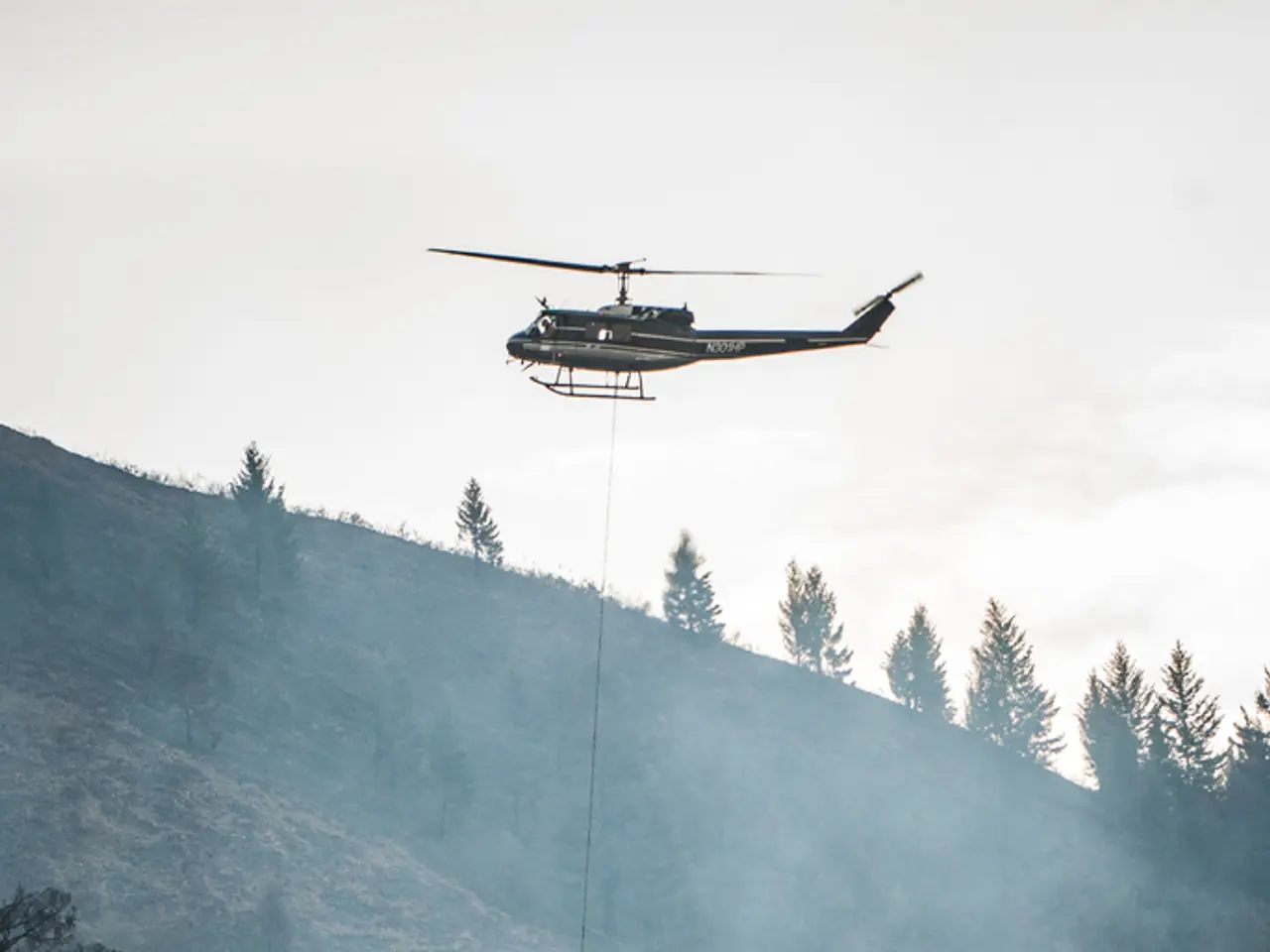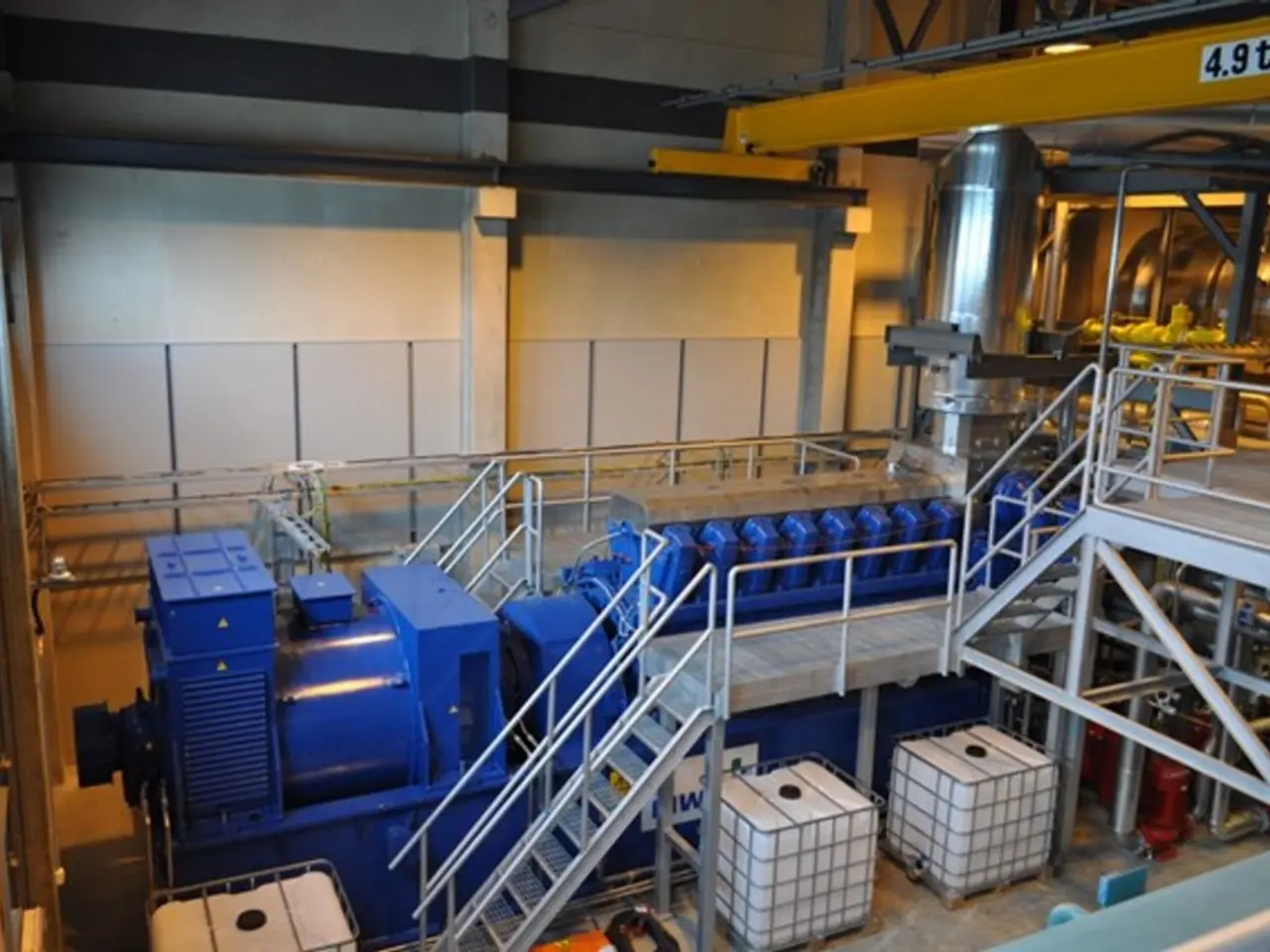"A harrowing helicopter rescue unfolds as mountaineers suffering from an avalanche-induced injury find themselves in a precarious position in the Scottish Highlands"
In the heart of Scotland's Cairngorms National Park, an unusual avalanche season has been causing concern for climbers and rescue teams alike. On February 16, 2025, two climbers found themselves in trouble when hit by falling snow and ice from a collapsing cornice.
The rescue operation, involving 15 people, was a collaborative effort between the RAF Mountain Rescue Service and the Cairngorm Mountain Rescue Team. The incident took place in the Mess of Pottage area of Coire an t-Sneachda, a popular climbing area known for its moderate mixed rock and snow routes, gullies, and ramps.
Fortunately, the rescued climbers were treated on the site of the incident and then lowered to the valley floor and stretchered out in a helicopter. However, the incident marked the start of a series of rescues in the same area. On Tuesday, three more climbers had to be rescued, followed by two more later.
So, what can climbers do to stay safe in such hazardous conditions?
First and foremost, stay back from the edge of cornices. The rim edge is often fragile and can slough or collapse unexpectedly. Avoid stepping onto or just below the rim or scree shelves under the cornice to prevent triggering a fall or collapse.
Monitor avalanche conditions closely, especially in unusual or late seasons when typical seasonal patterns may differ. Use local avalanche forecasts and look for visual signs of instability such as recent avalanches, shooting cracks, rollerballs, and rapid warming.
Use proper equipment and skills. This includes traction devices, ice axe, self-arrest techniques, climbing harness, crampons (boot and ski/split), and reliable navigation tools (map, compass, GPS) to prepare for low visibility and variable terrain.
Avoid windward sides of ridges where cornice collapses are more likely to be triggered by climbers, and maintain caution especially during ridge travel.
Be prepared for unexpected cornice collapses, which can happen even on descent, as exemplified by incidents like the Mt. Everest cornice collapse near the Hillary Step where climbers barely escaped.
Regularly check weather and avalanche forecasts before and during your trip and adjust your route and timing accordingly to minimize risks related to cornices and avalanches during unusual seasons when frozen snow conditions may change unpredictably.
Follow local regulations and permitting rules which may be in place to manage access and safety on climbing routes known to have cornices or avalanche hazards.
Investing in the right equipment can also make a significant difference. The best waterproof jackets 2025 can provide protection against the elements during mountaineering in snow conditions. The best GPS watches 2025 feature useful tools for navigation and keeping on course in snowy conditions. Carrying a satellite communicator can keep you connected in tough conditions, allowing for message and signal relay via satellites. Probes are essential for determining the exact location of a buried victim during an avalanche. The best ice axes are crucial for tackling frozen terrain in snow conditions. Consider carrying an SOS device such as a Garmin Inreach for emergencies in avalanche-prone areas.
Since the incident, the Cairngorms Mountain Rescue Team has had to respond to two more emergencies where climbers needed rescuing following human-triggered avalanches. It's a reminder of the importance of staying safe and informed when venturing into the mountains, especially during unusual avalanche seasons.
- Climbers should be cautious around cornices during unusual avalanche seasons, as the rim edge can be fragile and may collapse unexpectedly.
- To stay safe in snowy conditions, climbers should invest in the right equipment such as waterproof jackets, reliable GPS watches, satellite communicators, probes, best ice axes, and SOS devices.







